-
The college is replacing some of the glass curtain walls on the Black Family Visual Arts Center, including the large etched glass window that clad the upper levels of the building over the west (campus) entrance (former link). The replacement glass here and over the south entrance will be less distracting and provide better management of daylight. The etched design over the west entrance, however lovely up close, did always look from a distance like creeping frost or condensation inside a multipane window whose seal had failed.
-
Very interesting: the college is putting a lot of effort into installing a sidewalk along College Street north of the site of the old DG House (see North College Street Sidewalk weekly update). Sidewalks are good, and this one must have been deemed necessary, but there was something romantic about the way College Park spilled wildly toward the shoulder of the road, untamed. Just look at this barely-trammeled wilderness, as seen in Google Street View during July 2019:
At any rate, the project involves what appears to be a hand-laid stone retaining wall intended as a counterpart to the existing wall to the south. (Does that existing wall incorporate foundation stones from the Victorian DG House?)
-
Dartmouth News has a video on the wooden sculpture by Ursula von Rydingsvard called Wide Babelki Bowl that now stands northwest of Rollins Chapel. (It is not really a southern counterpart to Thel; that honor was held by Telemark Shortline, which has been removed.) As Jessica Hong notes in the video, the sculpture has a definite kinship with the cyclopean masonry of Rollins; it is also reminiscent of the multi-stone sculptures of Angkor Wat.
-
The college is going ahead with the DOC House renovation (project page) with funding from the Class of 1969. Compare the project page image with the image at The Call to Lead to see the exterior changes on the Occom Pond facade.
-
It is not clear if there is an earlier public mention than this April 20 article, but the trim Sports Pavilion by Burnham Field that was built in 2007 and expanded a decade later has finally been given a name: Reilly Pavilion.
-
Housing developer Michaels Student Living will build an $84 million graduate student housing complex on Mt. Support Road, near the hospital, in coordination with the college (see renderings in Dartmouth News release, site plan in The Dartmouth). The designer is JSA Design of Portsmouth (Boston Real Estate Times).
-
The Valley News reports that plans are afoot to save the Hanover Country Club as a nine-hole course. The northern two-thirds of the course, comprising holes seven through 15, would be used in the new course; the southern portion of the course, lying south of the bulk of Pine Park and including the clubhouse area and the bridge over Girl Brook, would be made available for possible college expansion.
-
The Valley News has a story on a new cold chamber to be built at CRREL.
-
The steel frame of the Irving Institute has been topped off (Dartmouth News).
-
Most construction projects, including the construction of a large dormitory at the corner of Crosby and Wheelock Streets, are on hold, reported The Dartmouth in June.
-
Vermonter Putnam Blodgett ’53 died on March 20 (Valley News). He led the Moosilauke advisory committee, and his woods were the source of the unique forked white pine called Slingshot that supports the second-level bridge as well as the roof of the new Ravine Lodge (see photos in Jim Collins, Welcome to the Woods, DAM (Jan-Feb 2018)). I recall him at the 1995 Senior Symposium talking about the 1949 Tug of War: apparently the regular tug of war between the freshmen and the seniors had come to be seen as too large and dangerous, so the college placed a huge log between the opposing teams and attached multiple ropes to each side. Unfortunately, one of the ropes came loose and the log went flying in the opposite direction, toward the side with more pulling force. He said it was a miracle that no one was badly injured.
-
A ring bearing the letter “Z” featured prominently in a photo in the July 24 Washington Post story on the Pebble Mine project in Alaska. The photograph, by Alex Milan Tracy, showed the right hand of then-CEO Tom Collier, a U.Va. graduate. It’s a safe bet that the ring indicates membership in the Z Society (Wikipedia).
Category Archives: societies
The college presents the three dorm sites
The college has been giving presentations (Valley News article) on the potential sites for a proposed 350-bed dorm. An initial list of four sites was reduced to three when College Park was dropped as a site for even this smaller version of the dorm. The three remaining sites are the former site of Gilman, the current site of Dragon on College Street, and the current site of the tennis courts and the Onion on Crosby Street at East Wheelock.
The suggestion on this site that scattering a few smaller additions around campus would be preferable to erecting a single 350-bed dormitory was based on the assumption that such a large building could not comfortably be shoehorned into a site as small as that on Crosby Street. Considering the fact that the entire McLaughlin cluster only contains 341 beds and has a footprint that is much too large to fit next to Alumni Gym, this assumption does not seem unreasonable.
The reason the college gives for the 350-bed number is the desire to use this swing space dorm to house an entire “house community” at a time. Fair enough — that is what Princeton did when it built Scully and Bloomberg Halls, initially planning the buildings to house a rotating cast of residents of other residential colleges as their own buildings were being renovated.
Adhering to the 350-bed goal will require all of the proposed buildings at Dartmouth to stand four and five stories high, and the Crosby Street site will require a building that stands five-and-a-half stories high.
At any rate, Sasaki (presumably) created a site plan and a massing study for each site and had Boston-area designer Dongik Lee draw up two perspective views of each potential building. These are nicely done and show the same style of building in each location. They are introduced with the caveat that they are not actual building proposals but are for illustration only.
Gilman and to a lesser extent College Street make sense as sites for some future building, but they do seem the lesser of the three sites for a new dormitory. College Street in particular begs to be left as forest or to become a site for an addition to Burke, part of a unified science complex 120 years in the making. (And constructing a building on College Street would bump off the Dragon Hall for at least the third time).
The Crosby Street proposal, called “the Question Mark” because of its shape, seems the most popular among audience members. It is nearer to dining areas and has a site that is not more suitable for some other use.
The site has indeed long been reserved for residential use — the 1998 master plan (pdf p. 19) states that “[a]t five stories, two residences on this site could accommodate 200 beds. Social and study spaces could be added to serve Topliff and New Hampshire [H]alls, too.” Interestingly, the 2001 plan and its 2002 update (pdf p. 12) would allow only 160 beds here.
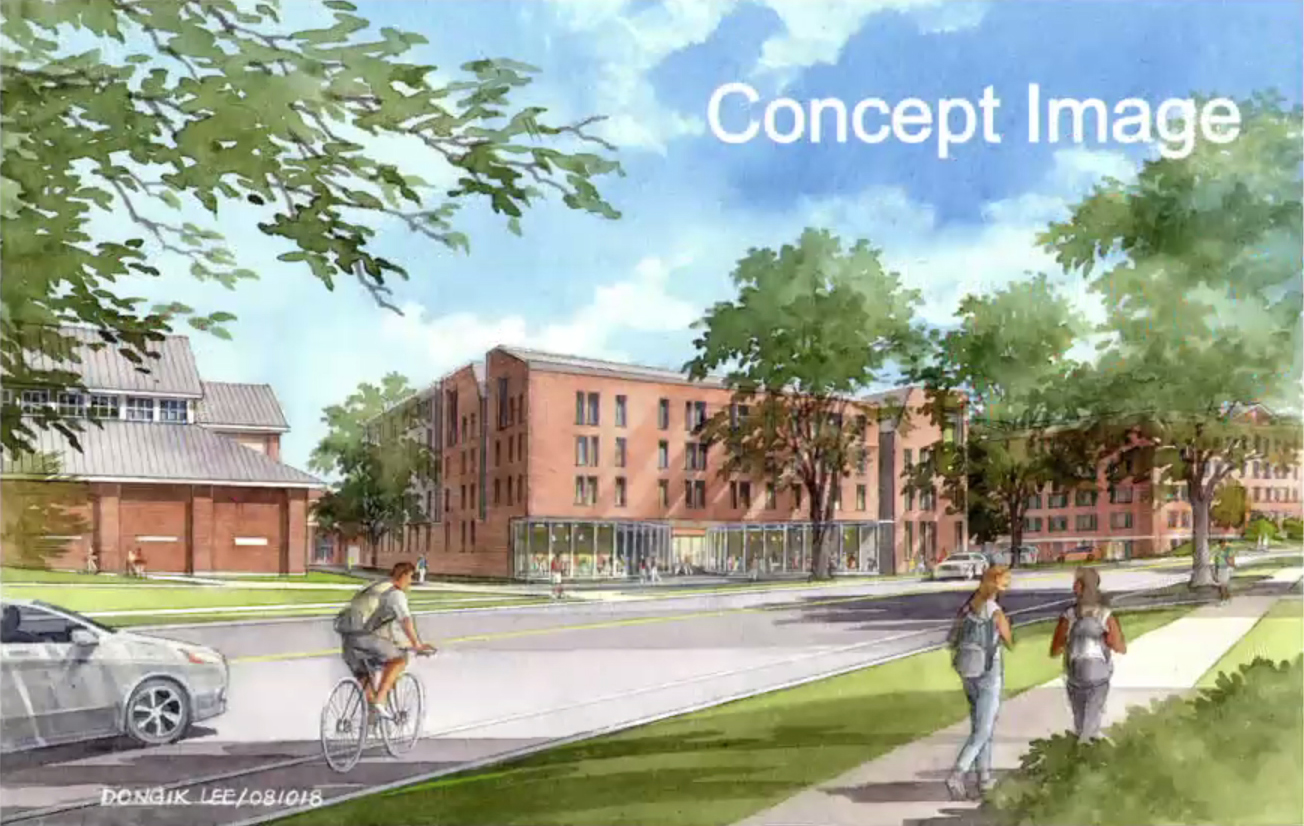
A dormitory on Crosby Street could make nice companion to Topliff, which was the giant dorm of its own era. One hopes, however, that the building could be given a footprint that is large enough — and that extends far enough to the south — to reduce its height somewhat. The driveway to Alumni Gym could be realigned to the south, and Davis Varsity House could be moved to face Lebanon Street as part of Larson Square, giving the new dorm more space in which to spread out. And this is completely unrealistic, at least until a Southern Bypass is built, but wouldn’t it be nice if Crosby Street could be partially or completely closed to traffic? That would be one way to make more space.
A statue of Fred Harris? And other tidbits
-
Sasaki Associates now has a page for its House Centers “pilot” program. This SCUP article has a “housing swarm” image that Sasaki created for Dartmouth. A Valley News article states that the college “estimated it will cost $12.8 million to build professors’ residences and temporary centers for Dartmouth’s Undergraduate House Communities program.” But those have already been built. Presumably that estimate refers to completed construction. Any future, permanent versions of those buildings will cost a lot more than $13 million.
-
BBB has updated its page on the campus master plan to include a large version of that plan, an image of the West End plan (Green to Blue), and — this is new — a schematic perspective rendering of the cemetery bridge, which we can call Fletcher Viaduct.
-
This Valley News article notes Kendal’s interest in building to the south on Rivercrest land and leaving the Chieftain land for recreation (rowing).
-
Sir John Soane’s Museum in London has a computer model of the museum on line.
-
The architects have completed a design for the Irving Institute (Valley News).
-
The Dartmouth has an article on the success of the Town fence in front of Collis in reducing jaywalking.
-
The Hood has a brochure on public art on campus. The Class of 1965 has proposed to erect a statue of DOC founder Fred Harris in front of Robinson Hall. The campus architecture committee is considering the idea, according to the ’65 newsletter.
-
A bit of biography on David Hooke, who’s at the center of the new Moosilauke Ravine Lodge.
-
Dartmouth will play Brown at football in Fenway Park on November 10, Big Green Alert reports. Wild.
-
The Rauner Library Blog has a post about the Charter.
-
Kresge Library in Fairchild has turned 40 years old.
-
This Times editorial contains footnotes. Kinda neat, but also showy: if footnotes are needed here, why not everywhere? Or if the paper is to be relied on generally, why include notes here?
-
Big Green Alert points out the new use of the Lone Pine logo by the Co-Op. First impression? The trad typeface clashes with the fat Modernism of the pine. The use of the athletics nickname BIG GREEN in this seal-like, college-wide institutional device is also weird.
-
A Proliferation of Canes. Photos of the most recent Commencement show students carrying many strange, new-ish canes, most presumably representing senior societies. They feature a snake wrapped around a Native American arrow; a bearded old man; the domed main body of Shattuck Observatory (clever!); a snake clutching an apple in its mouth; a huge phoenix (for Phoenix, obviously — is that cast resin or something?); a tail, perhaps belonging to a whale?; and a three-dimensional stylization of the stylized Lone Pine symbol (also a metal globe).
-
Two interesting new-ish concepts: literary geography and forensic architecture.
Image of new Ledyard; selecting Ravine Lodge timbers
-
The Moosilauke project is beginning. Wow. See the aerial of timber framing. And see the unique, oddly-shaped timbers destined to become crucks and idiosyncratic railings and so on. Much of timber, the update states, was harvested under the direction of the College Forester from college lands on Trescott Road, off Grasse Road in Hanover.
-
The project page for the Ledyard Canoe Club replacement has a depiction of the future building. Taking advantage of the slope like a Pennsylvania bank barn, the clubhouse will stand three stories high.
-
The Rauner Library blog has a post on Dartmouth Night telegrams and a post on the Old Pine, particularly the fragment of the pine kept in the archives.
-
A presentation (pdf) from the summer shows possible bike lanes connecting Hanover and DHMC.
-
Speaking of Schinkel (in a post of two months ago), Adobe has produced a time-lapse video of Mike Campau recreating Schinkel’s lost painting Cathedral Towering Over a Town using thousands of bits of stock photos.
-
The 2015 Jones Media Center interior renovation in Berry Library was designed by Jones Architecture and built by North Branch. Jones also designed the DartmouthX Studio around the same time. It occupies the far east end of Berry.
-
What if the college, finding itself expanding onto the south end of the golf course, simply added another nine holes to the east (by the Rugby Clubhouse) and to the north (behind the Fire Department, even into the Fletcher Circle neighborhood)? The Times had an article on swapping the front and back nine on a golf course.
-
Microsoft’s Bing has its Streetside view (like Google Street View), and the service has come to Hanover. Are its photos taken at shorter increments than Google’s? It does seem easier to navigate, but it offers less coverage nationally and in Hanover. The photos seem less sharp. The aerial and bird’s eye views are superior to Google’s.
-
Some of the best photos yet of the DEN space in 4 Currier (project page) are in the Truex Cullins blog.
-
If the Dartmouth Cup (see the post from the summer) does not fill the role of a mace, the college’s eagle feather staff, featured in Dartmouth Now, surely could.
-
Dean of Libraries Jeffrey Horrell retired in June.
-
The Valley News reports that the owners of the Salt Hill Pub have bought the Seven Barrel Brewery in West Leb and that the college has sold its interest in Centerra Marketplace, the suburban mall partway to the hospital that houses a Co-Op Food Store location.
Co-Op Food Store in Centerra
———
11.28.2016 update: DEN project page link added.
Summertomb
Some tombs or tomblike buildings spotted during July and August. Any of these would make a fine model for a senior society hall:
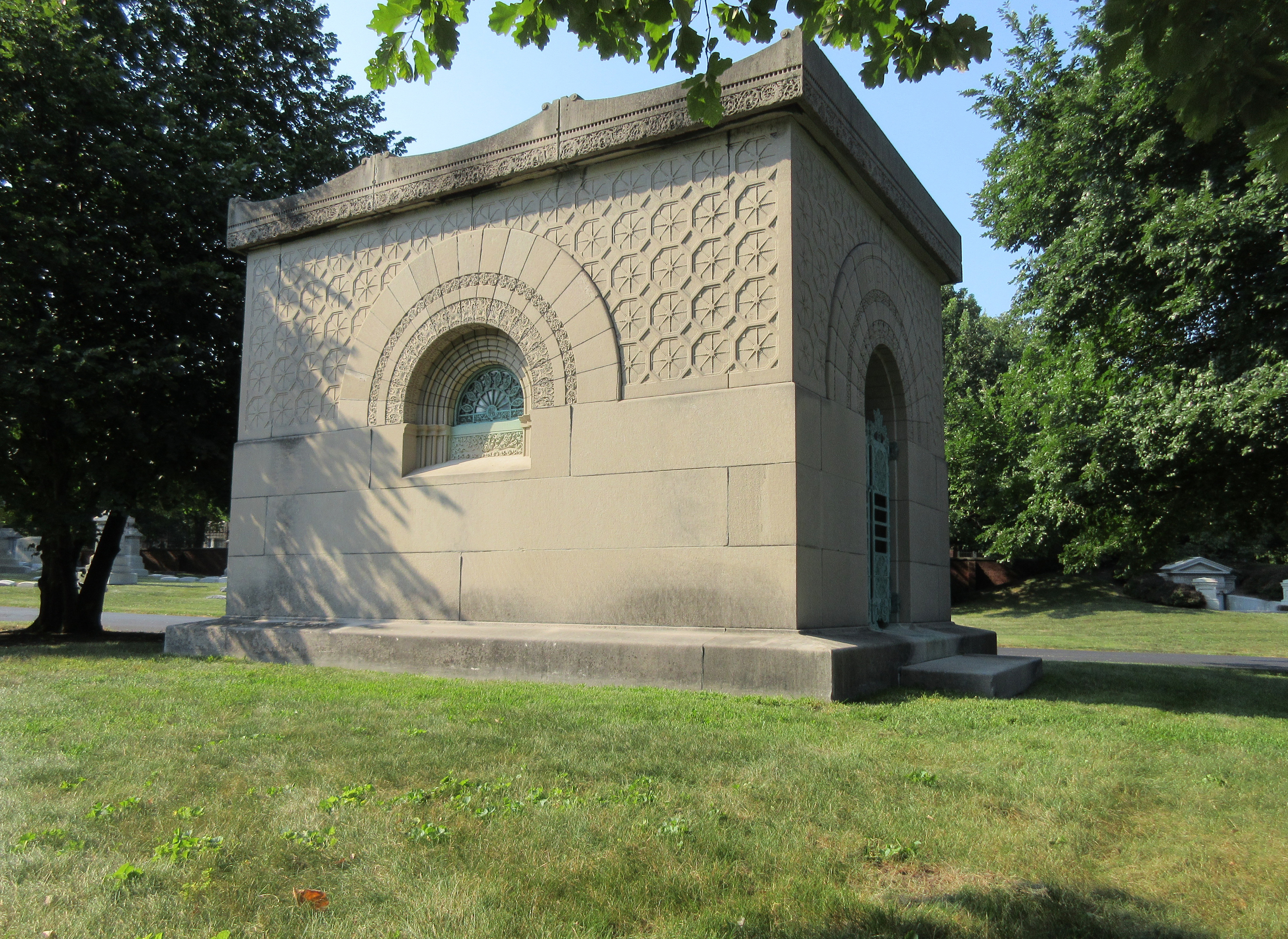
Above: South and east facades, Getty Tomb, Graceland Cemetery, Chicago, Illinois (Louis Sullivan, 1890).
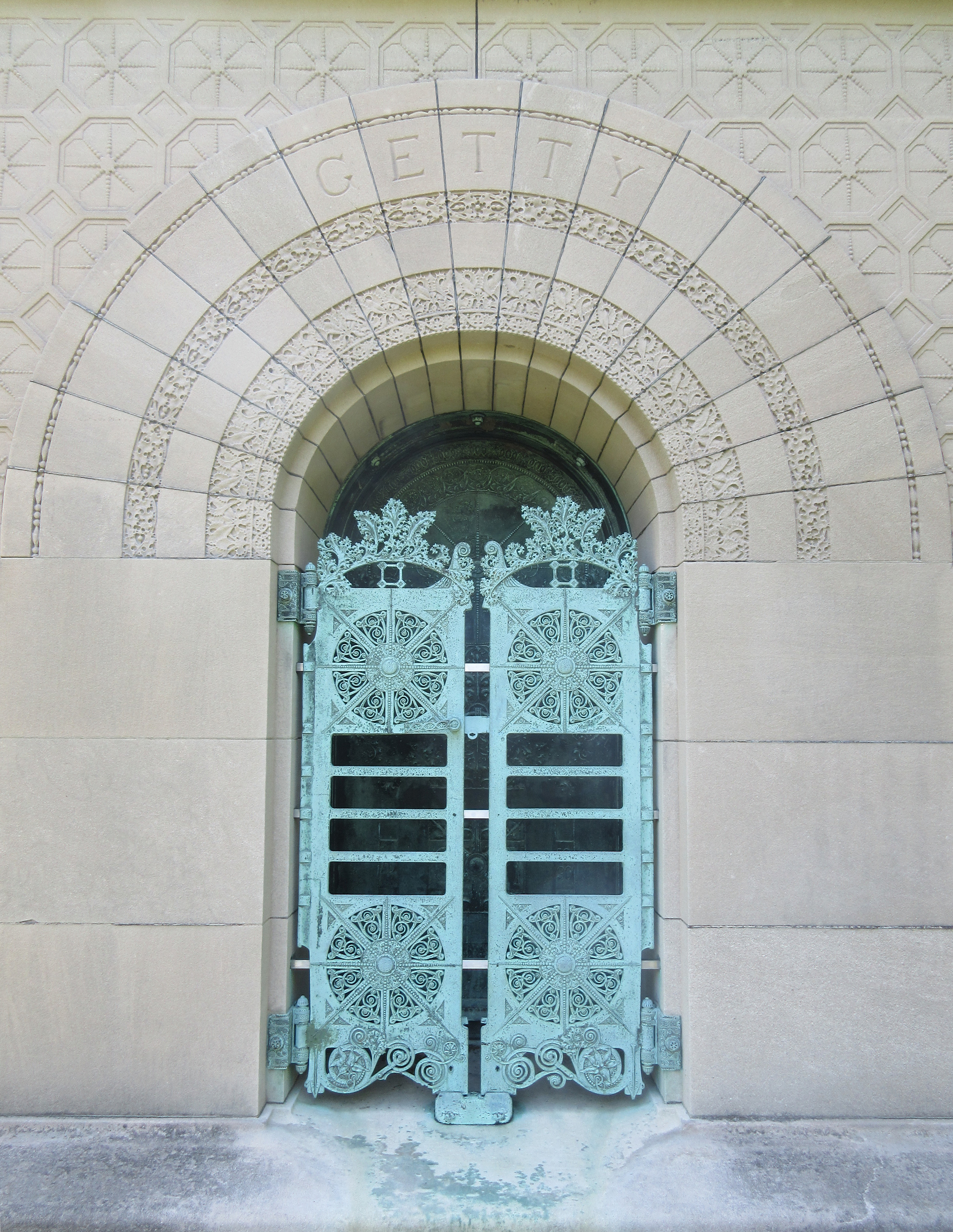
Above: Entrance detail, Getty Tomb.
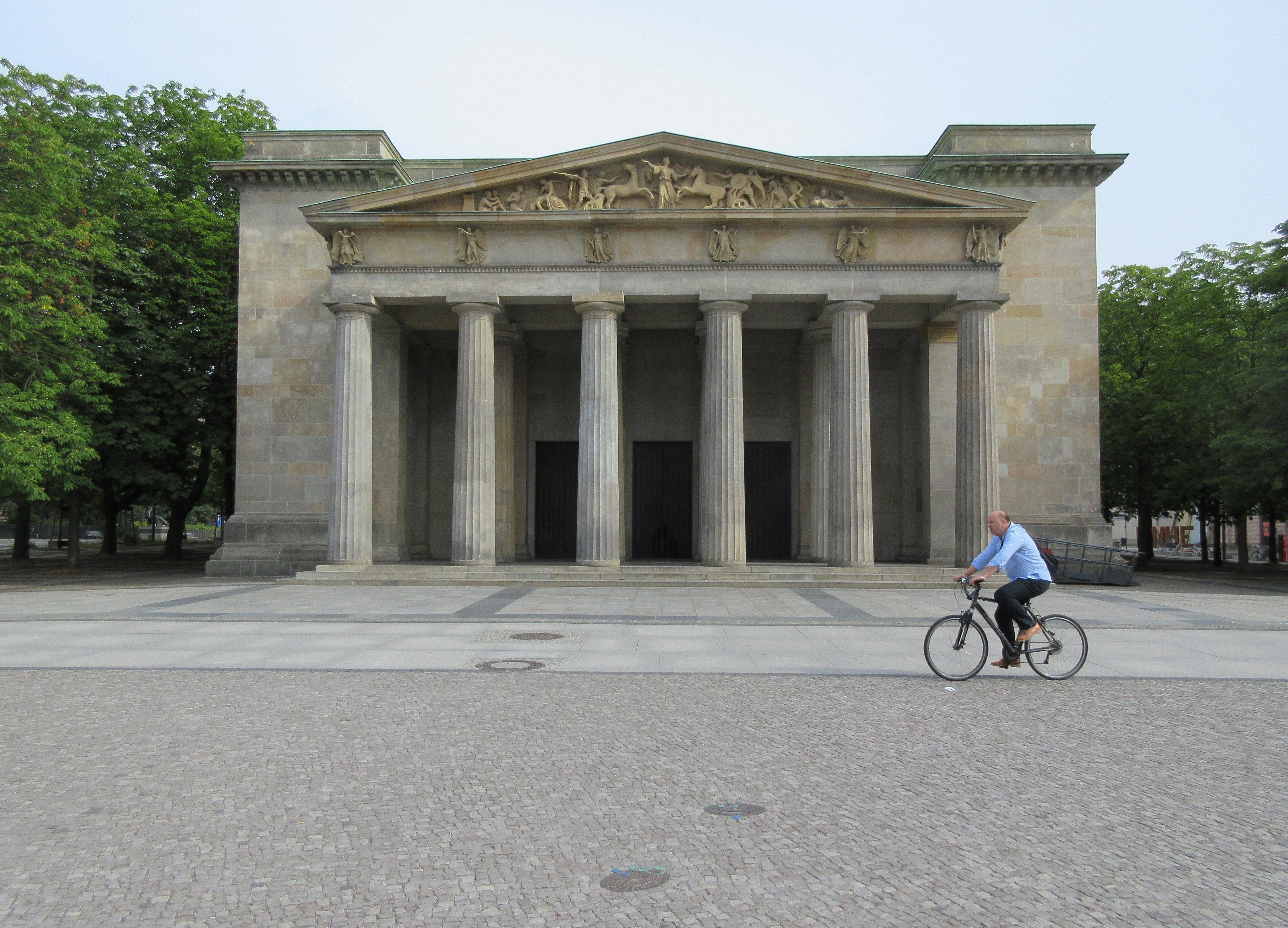
Above: South facade, Neue Wache (New Guardhouse), Unter den Linden, Berlin, Germany (Karl Friedrich Schinkel, 1816).
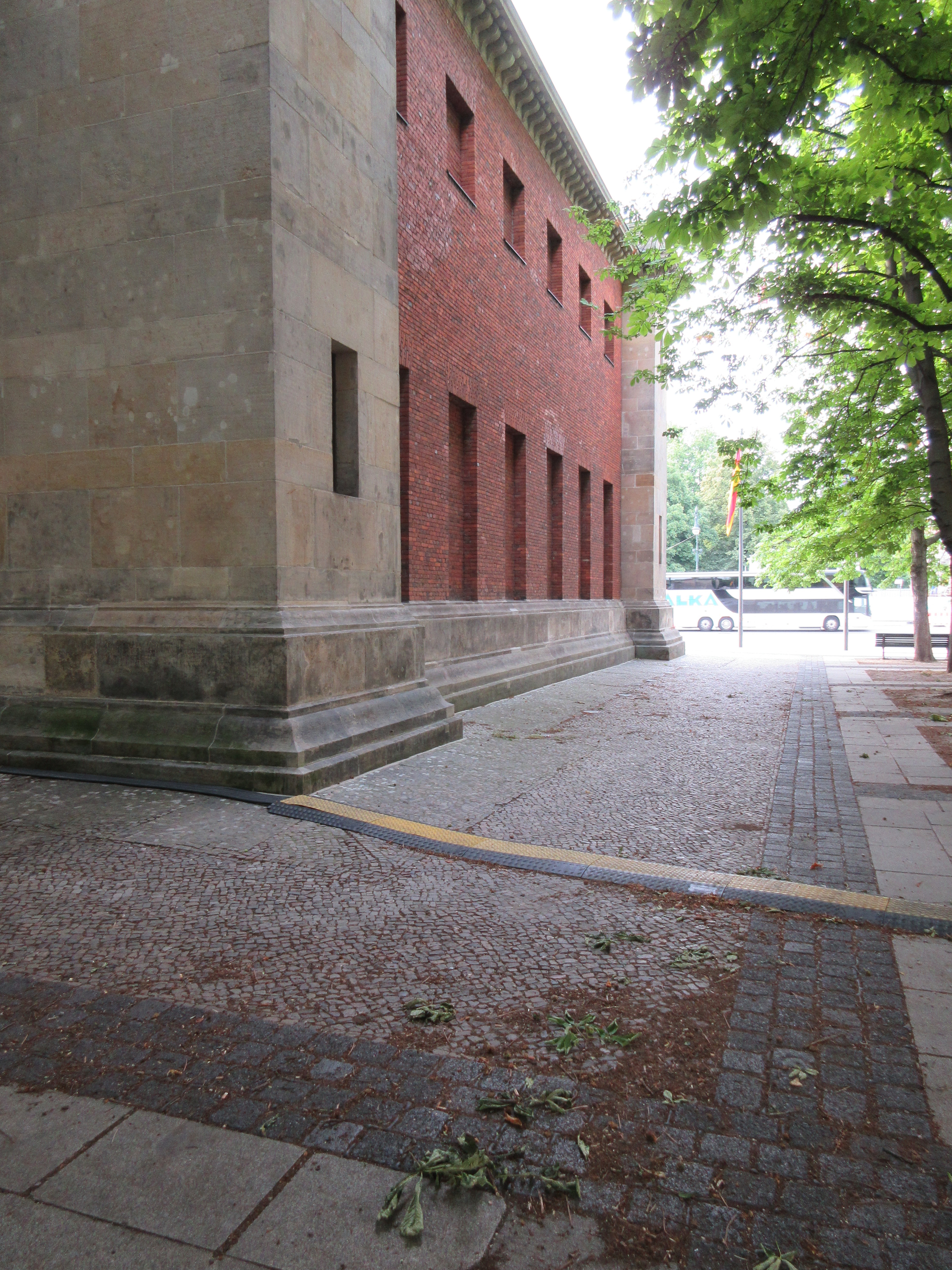
Above: West facade, Neue Wache (view to south).
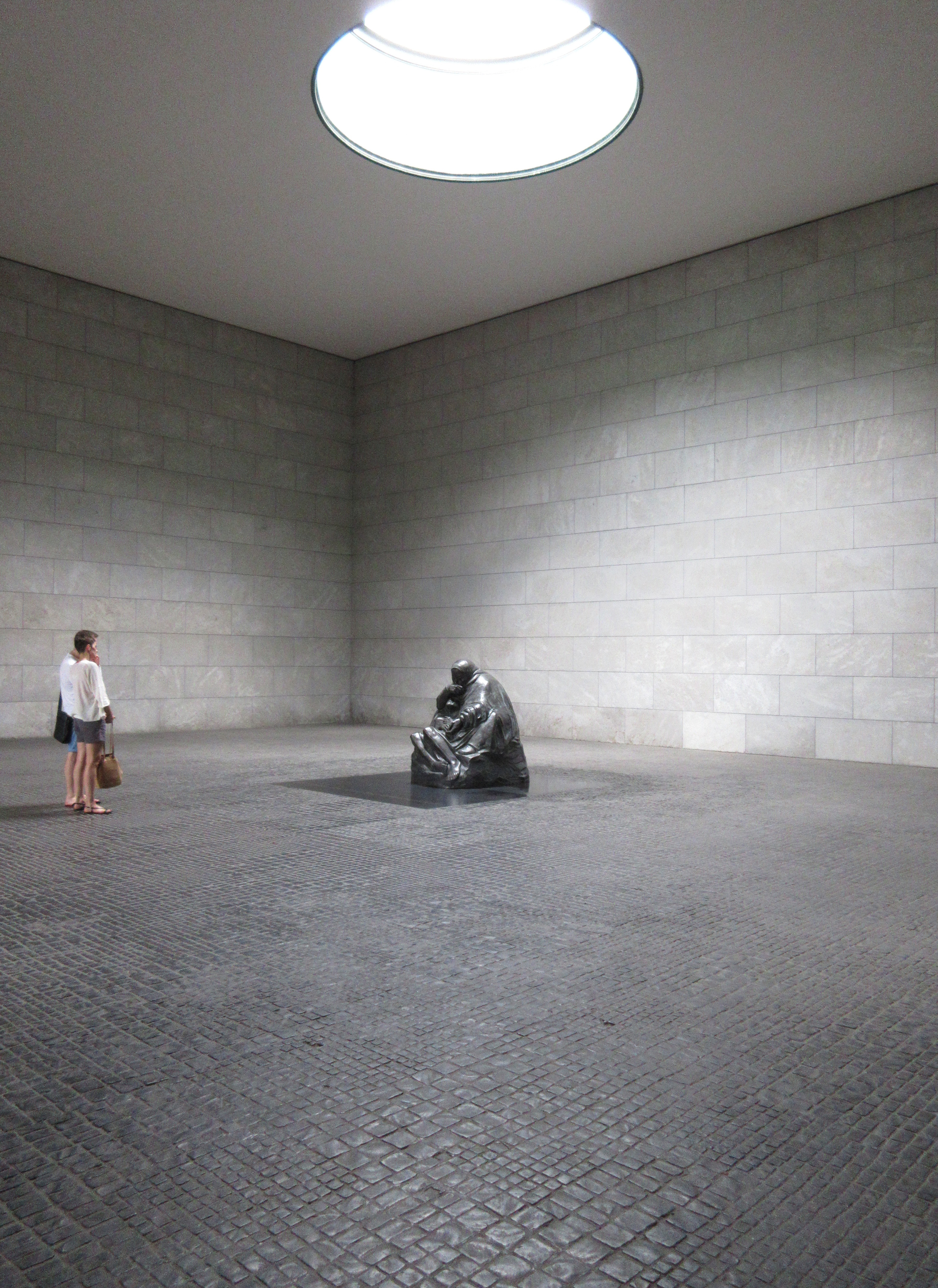
Above: Interior, Neue Wache (view to northwest).
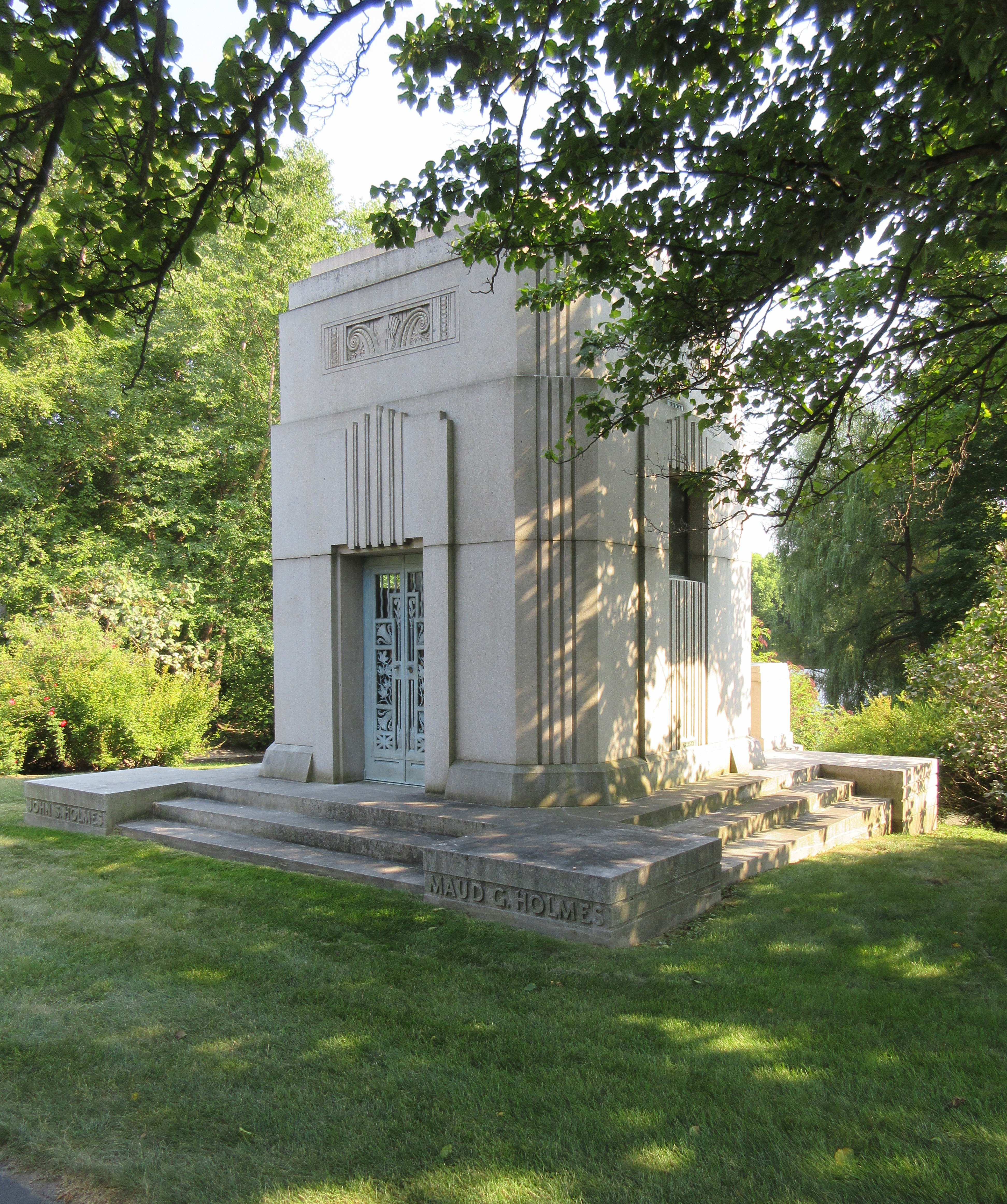
Above: North and west facades, Holmes Mausoleum, Graceland Cemetery (Charles B. Blake Company, 1934).
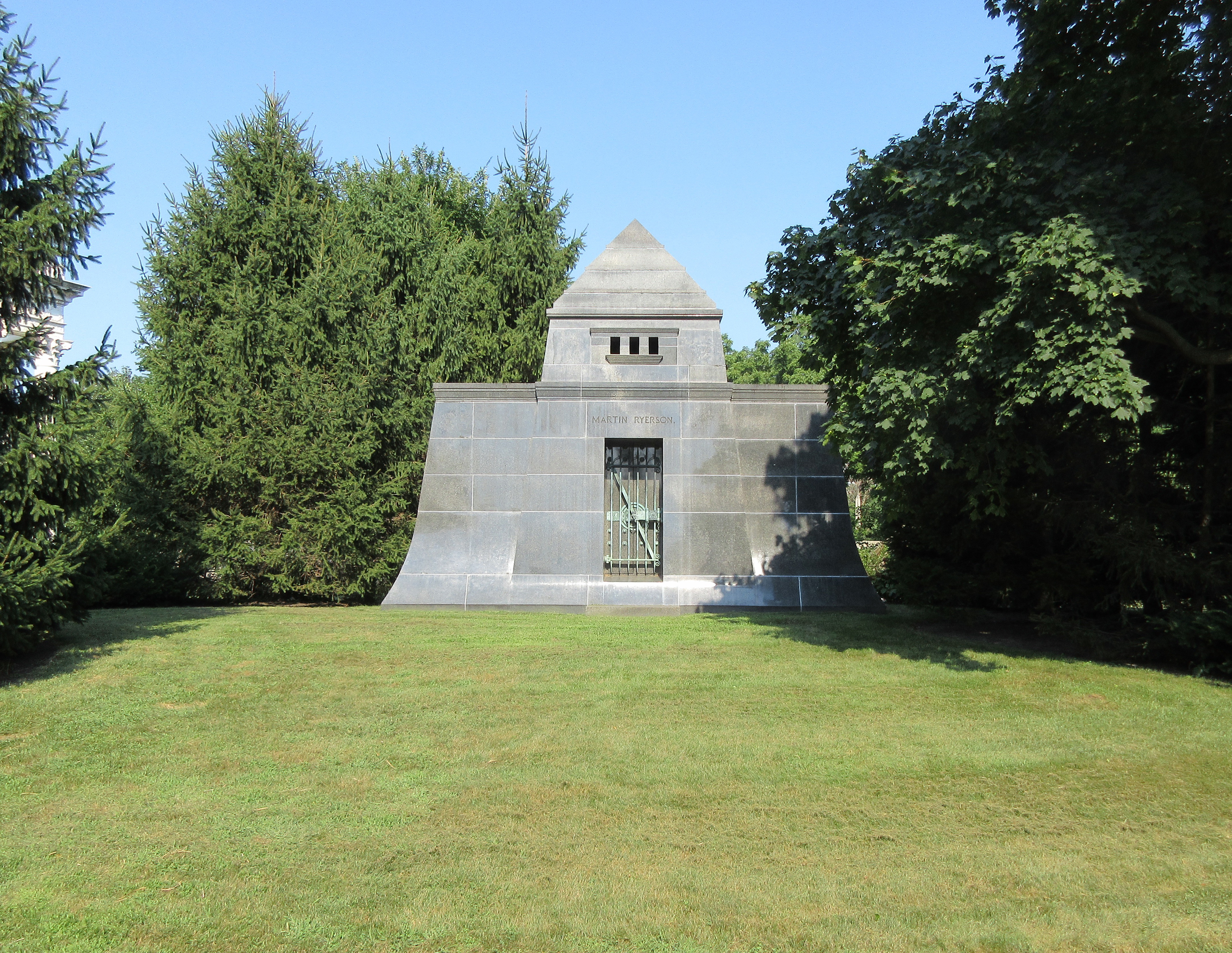
Above: West facade, Ryerson Tomb, Graceland Cemetery (Sullivan, 1889).
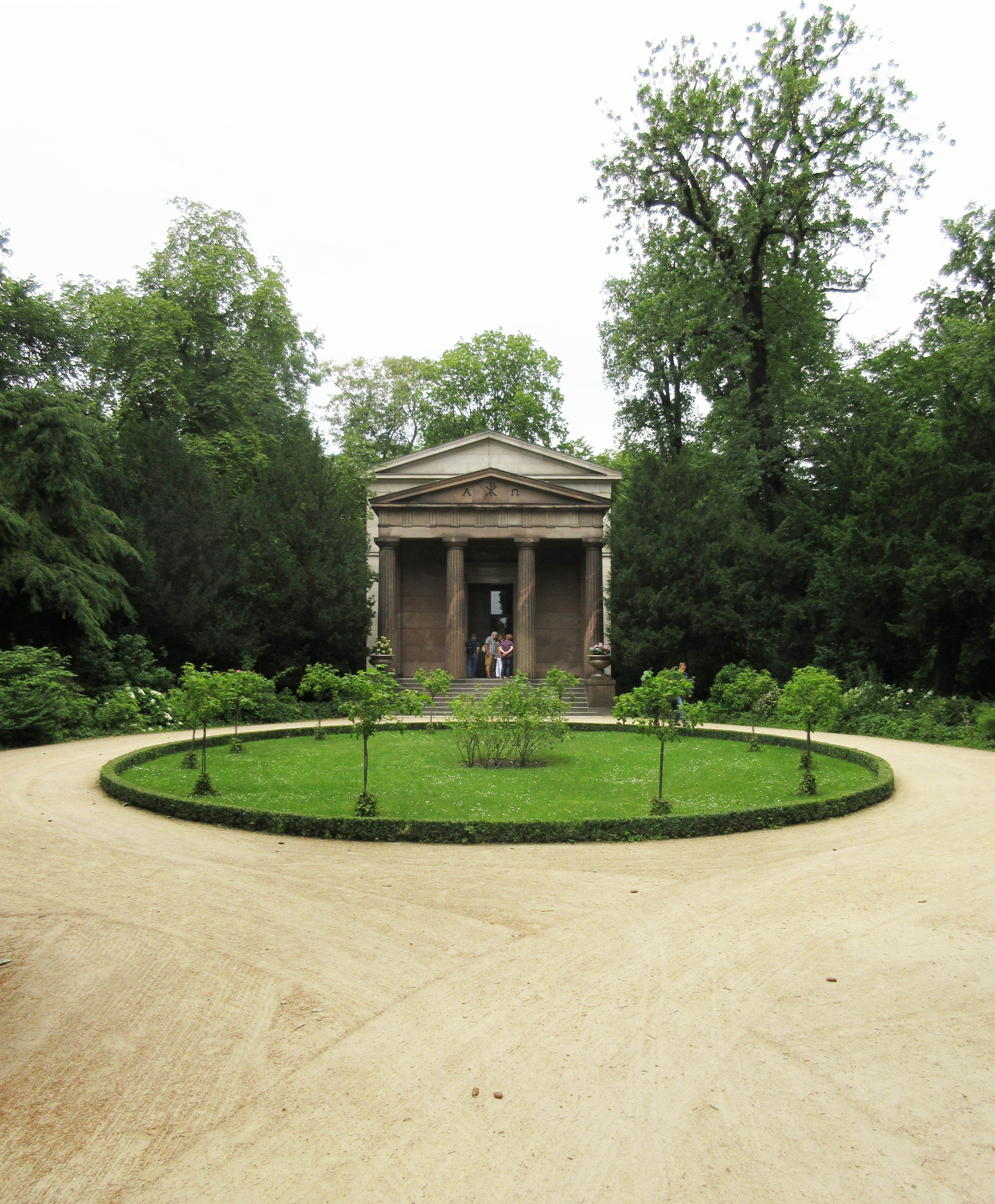
Above: South facade, Mausoleum (of Queen Luise of Prussia), Schloss Charlottenburg, Berlin (Schinkel, 1810).
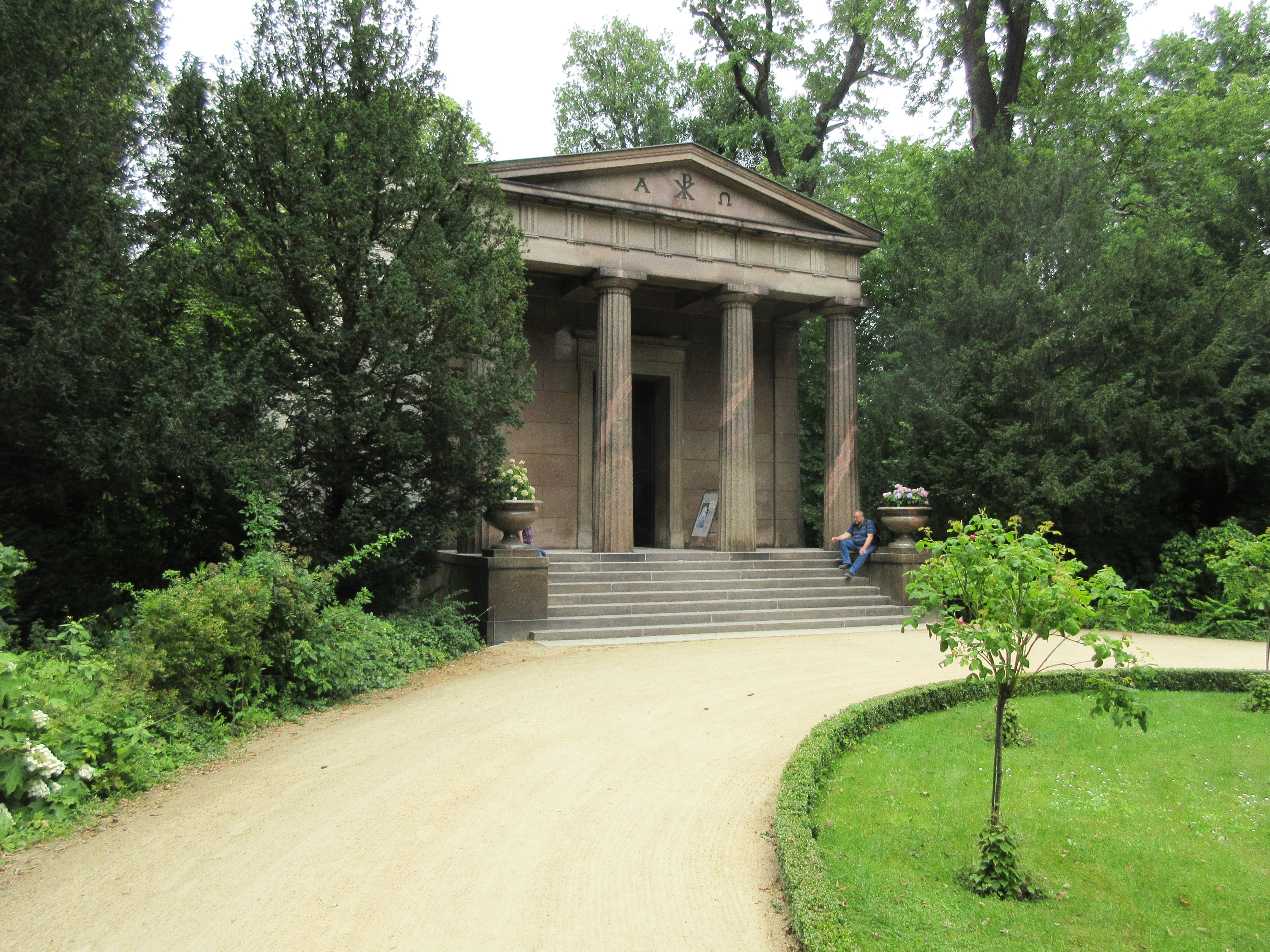
Above: South facade, Mausoleum, Charlottenburg.
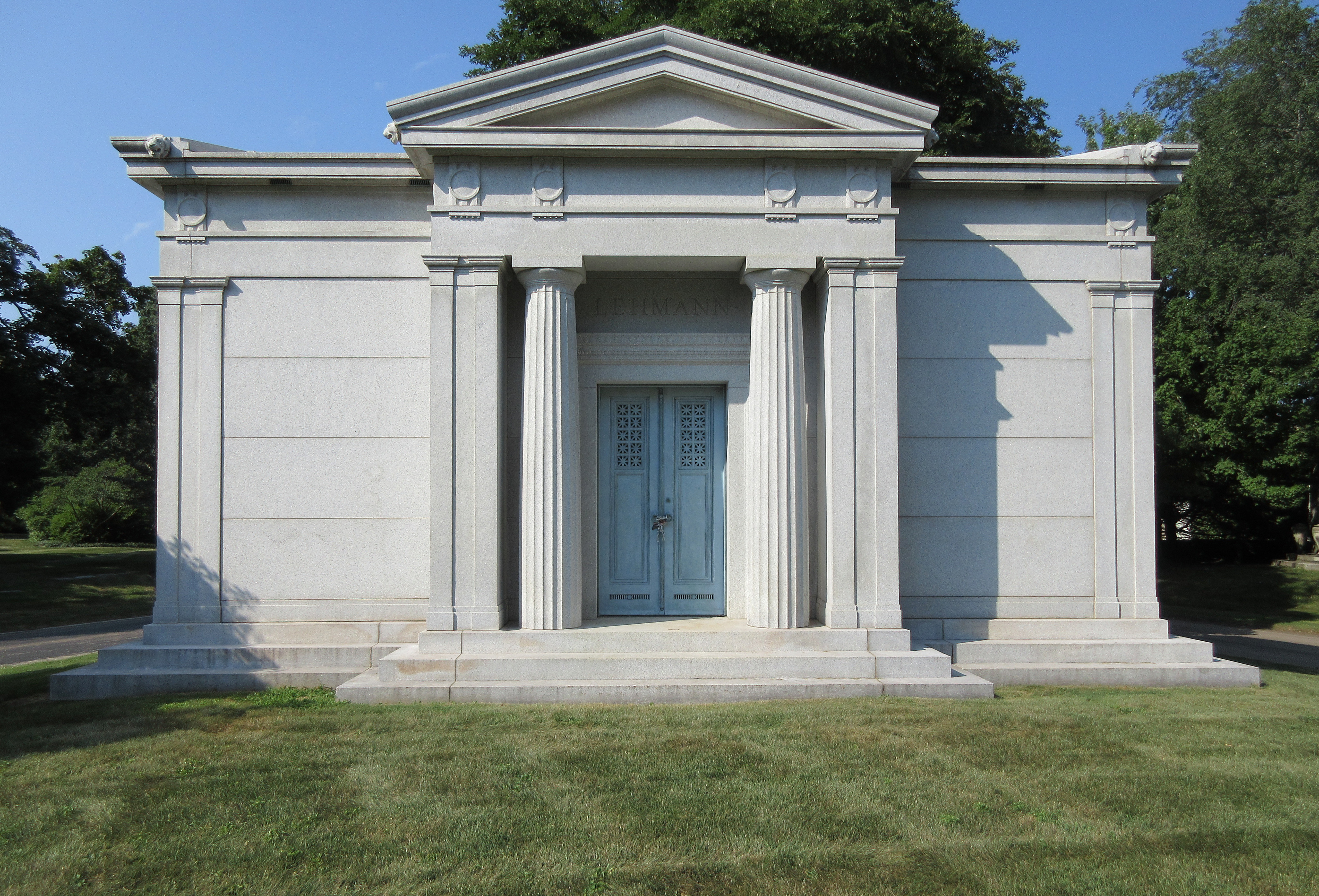
Above: South facade, Lehmann Mausoleum, Graceland Cemetery (Mundie & Jensen, 1919).
Some campus photos and notes

The first stage of the steam tunnel’s construction, south of this grate, was a test meant to determine whether such a project would be economical in a ledge environment.
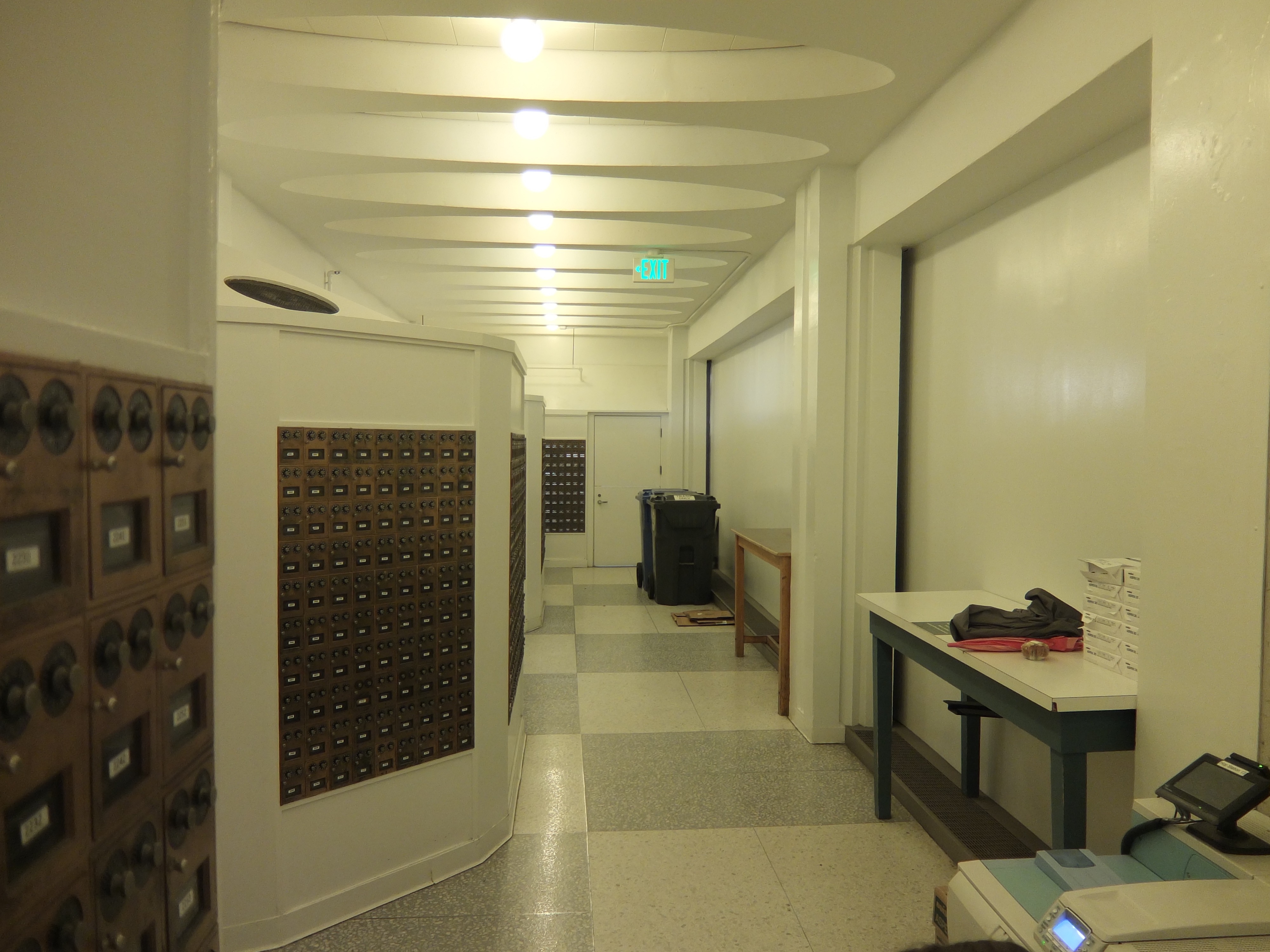
Until recently, students entered the Hop at the end of the room. The entrance was closed off and a replacement of the same configuration built just to the north.
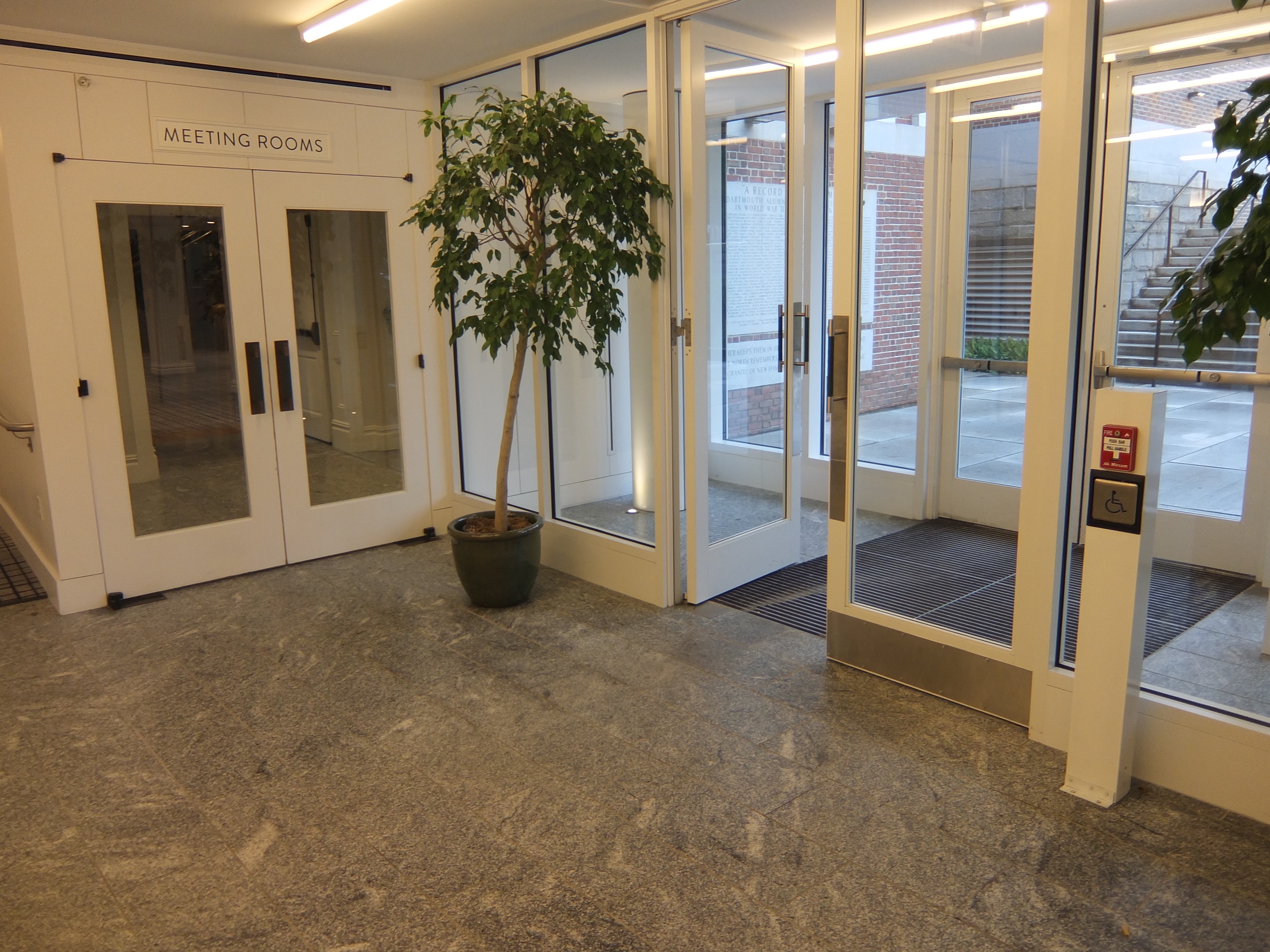
(Have the memorial plaques attached to the Inn there been moved to Memorial Field? That would make sense. This is not their first location anyway.)
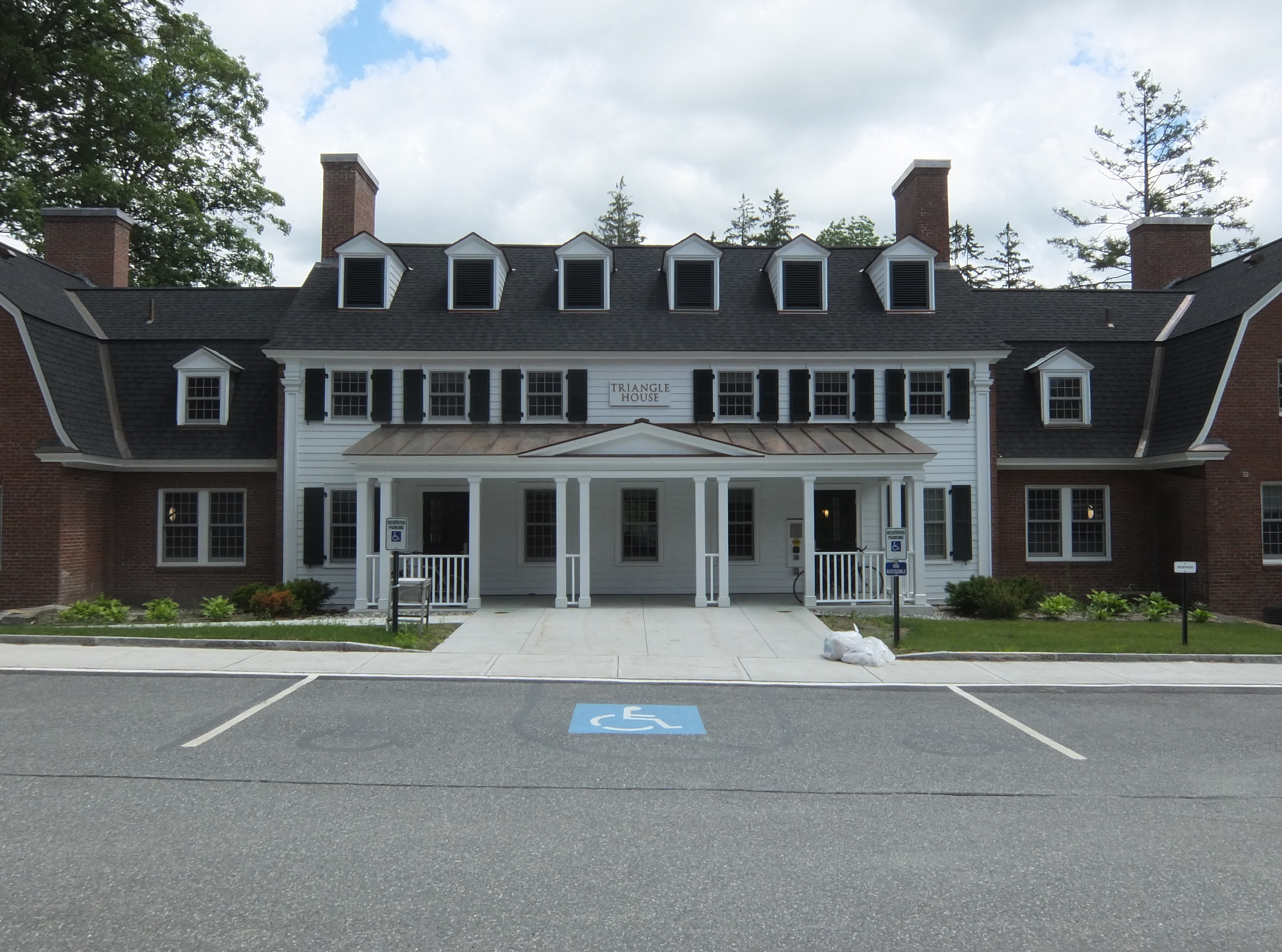
Even more than the society houses on the south side of Webster Avenue, Triangle House has a well-used student entrance on one side, shown here, and a formal street entrance on the other.
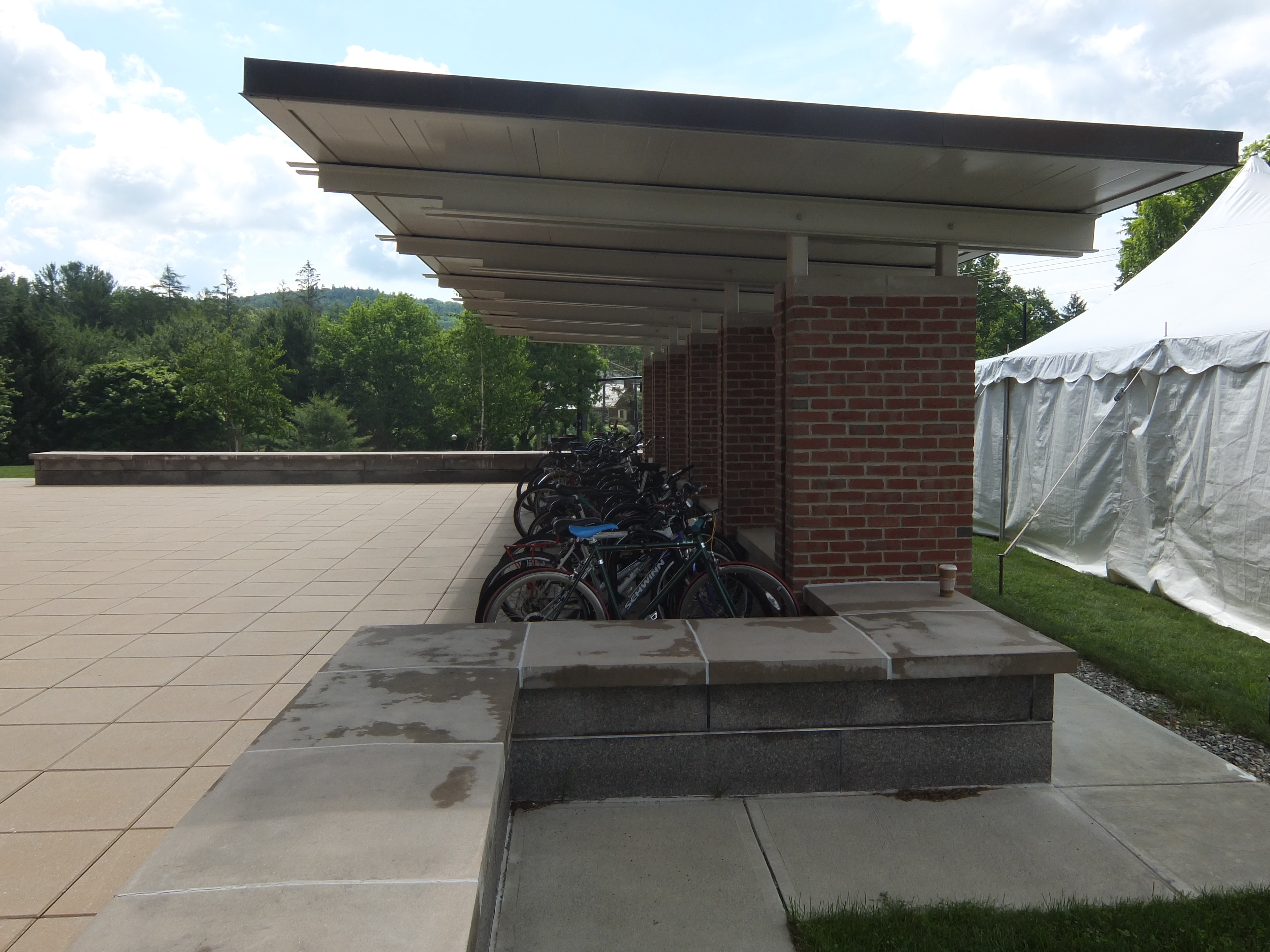
This elaborate bicycle shelter for the Life Sciences Center joins a couple other pavilions in the area.
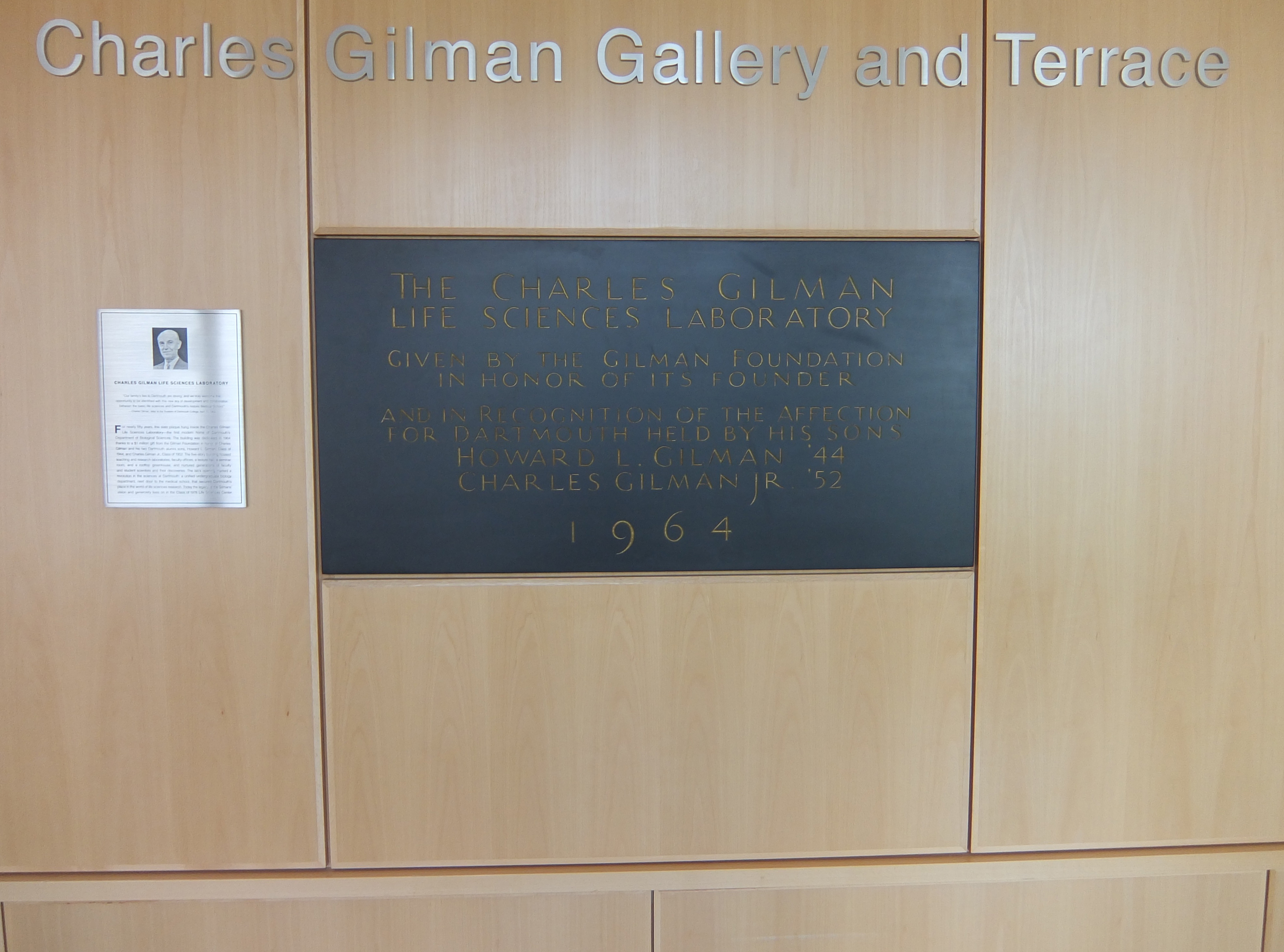
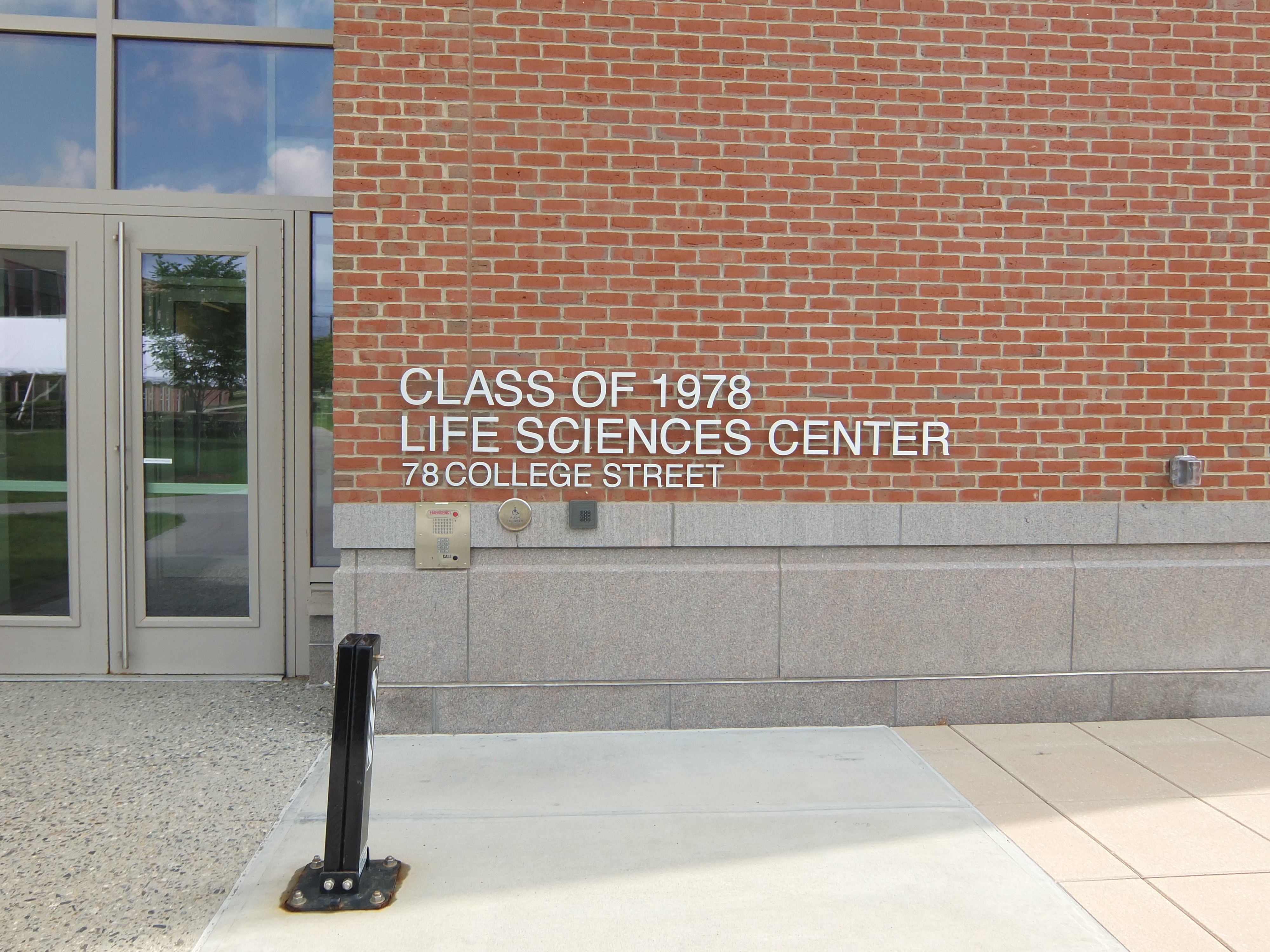
The town changed the street address of the building to get it to match.
Wheelock’s Mansion House sold
The Valley News reports that the college is selling Eleazar Wheelock’s house to the Eleazar Wheelock Society, a “pan-denominational resource promoting a constructive role for faith in learning environments like Dartmouth,” as well as at Dartmouth itself. The group will remodel the building to house 24 students. The college only acquired the house a few years ago, and it seems to be imposing a private historic preservation covenant in this sale. The renovation that turned the house into the Howe Library around 1900 was designed by Charles A. Rich, while the ominous/cute brick stacks addition is later.
The “Mansion House” for the college president was built with funds from London evangelical John Thornton, so its acquisition by this group seems particularly appropriate. The group was founded by alumni in 2008 and aims to establish “a reproducible model that can be duplicated on college and university campuses elsewhere.” It admires Wheelock “because of his commitment to the biblical worldview.”
In thanking Joseph Asch for his kind mention of this site on Dartblog, I am compelled to note Princeton’s preservation of an early president’s house1The house is not that of Princeton’s founding president, if the school had such a person: the College of New Jersey was established in Elizabeth and moved to Newark before it settled in Princeton. that is both older than Dartmouth’s and still in its original location. A 1764 engraving by Dawkins (reproduced in a Princeton news article) shows the Maclean House in front and to the right of Nassau Hall. The two buildings are still standing and appear in this recent Bing aerial.
Putting the president’s house alongside the lawn that lay between the street and the college proper was a standard practice. This image shows Dartmouth’s president’s house in its original location at the righthand end of Dartmouth Row.2Although Wheelock died before Dartmouth Hall was built, he anticipated the construction of a college on the hill and likely had the site in mind when he built his own house.
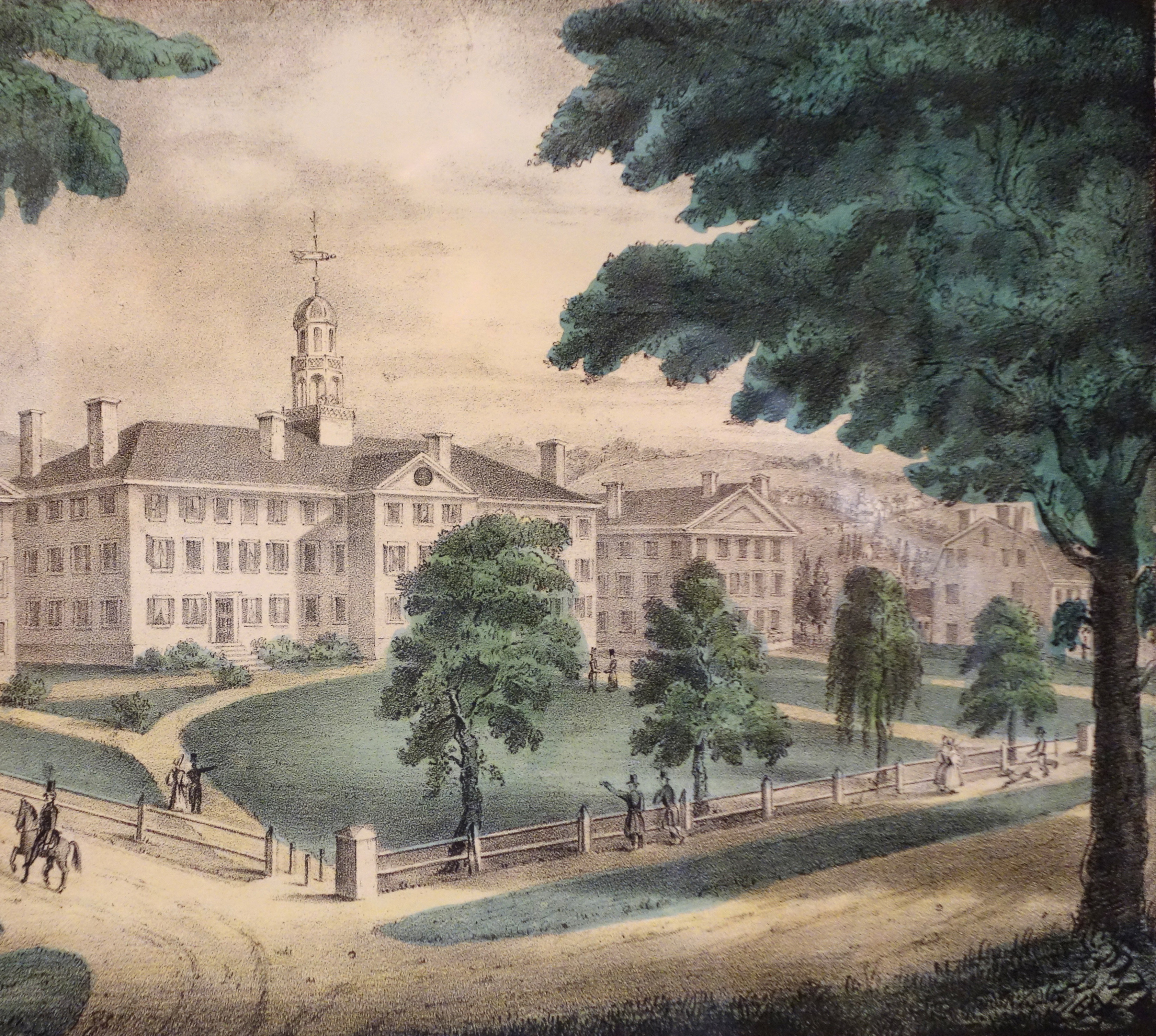
The relation of the president’s house to the college building made early Dartmouth look very much like early Princeton.3 Early views of the two schools are so similar, in fact, that Dartmouth once used the Dawkins engraving of Nassau Hall as the cover of its annual report in error; confirmation will be posted as it is found.
[Update 11.13.2015: Final three paragraphs added.]
——-
| ↑1 | The house is not that of Princeton’s founding president, if the school had such a person: the College of New Jersey was established in Elizabeth and moved to Newark before it settled in Princeton. |
|---|---|
| ↑2 | Although Wheelock died before Dartmouth Hall was built, he anticipated the construction of a college on the hill and likely had the site in mind when he built his own house. |
| ↑3 | Early views of the two schools are so similar, in fact, that Dartmouth once used the Dawkins engraving of Nassau Hall as the cover of its annual report in error; confirmation will be posted as it is found. |
New sorority and parking lot
Investiture and other topics
-
The report of the 210th Alumni Council meeting updates us on plans underway to create a freestanding School of Graduate Studies that will coordinate the 17 Ph.D. programs and 12 Masters’ programs that exist alongside the professional degrees of the three professional schools. Grad Studies is now holding its first investiture ceremony (Dartmouth Now). The coat of arms was just the first step…
-
The Council meeting summary states that “[t]he College has also received sufficient donations to support the initial year of the new residential model of house communities.” That’s an interesting funding method; presumably in the long term the school will seek a naming gift for each Community. The funding element is not mentioned in the full report, although the need for heraldry (again) is foreshadowed:
House programming budgets will support a wide range of activities including “feeds,” intramurals, concerts, field trips, new annual traditions, alumni events, house swag, experiential learning, and leadership development activities.
Happy to see the term “feed” surviving.
-
It was a surprise to find last year that the famous Concord Coach that regularly carried the football team to the railroad station more than a century ago still existed (post). Now, courtesy of Time Well Kept: Selections from the Wells Fargo Corporate Archives, we learn that the coach of famous Hanover liveryman Ira Allen survives as well! From the book:
J.S. and E.A. Abbot and Company built coach #746 in the spring of 1864 for New Hampshire stage operator Ira B. Allen, who ordered his coach made two inches narrower and lighter than other typical nine-passenger coaches. Coach builders painted #746 dark green, a standard but seldom-chosen color requested by Allen, whose staging business in Hanover carried many students and visitors to Dartmouth College.
The coach, which is no longer painted green, is on display in Miami.
-
The Alumni Magazine in its May-June issue featured a number of historic photos of life at the college, carefully colored by Sanna Dullaway. The photo of the Golden Corner and watering trough, the tenth or so image, looks like it gets the color right.
-
The Big Green Alert continues to cover progress at Memorial Field, with photos on May 14, 20, and 22, and June 4.
-
Really intriguing things are going on with the proposal for a natural gas pipeline from Lebanon to the Heating Plant via DHMC (Valley News).
-
Received the latest campus map through email ahead of the reunion next weekend. It looks nice. It labels all of the sports fields and, possibly for the first time, labels the Softball Park and Burnham Pavilion (I thought that one was also unnamed as the Sports Pavilion?). It depicts the Lewiston buildings. It calls attention to the fact that the parking lot behind Thayer/53 Commons is still called “DDA Lot,” even though DDA became DDS a quarter-century ago. One does wish that the mapmakers would abbreviate the “Saint” in the names of the churches. And is the official name of the cemetery really the “Town of Hanover Cemetery,” when it was built on college-owned land and run by the Dartmouth Cemetery Association? Finally, one hopes that the roadway labeled “Old Tuck Drive” is not called that in practice. There is no “new” Tuck Drive to distinguish it from, and it’s the same as it ever was: Tuck Drive.
-
The Dartmouth reports on Tri-Delt’s decision to go local.
-
The website of Gamma Delta Chi documents the changes that the organization is making to its house, including an extensive set of alterations to the Pit.
-
The Valley News, reporting on the AD derecognition, quotes college spokeswoman Diana Lawrence:
“Students are free to join any organization that’s not recognized by the college,” she said, so as far as Dartmouth is concerned, “they can become Freemasons.”
In case you were wondering in 1799, “the Board of Trust declared itself in a decree that any student becoming a mason should thereby cease to be a member of College.”1John King Lord, A History of Dartmouth College, 1815-1909 (Concord, N.H.: The Rumford Press, 1913 ), 520.
-
The Rauner blog has an interesting post on the ownership of the Green.
-
The voters of the Town defeated the West Wheelock Gateway District proposal (Valley News).
—————
| ↑1 | John King Lord, A History of Dartmouth College, 1815-1909 (Concord, N.H.: The Rumford Press, 1913 ), 520. |
|---|
Major additions to Tri-Kap
As noted here last month, Tri-Kap is beginning a major renovation of and addition to its house (The Dartmouth).
The Weimann-Lamphere plans are available from the fraternity as a pdf. They show a full-height addition to each end of the house.
This is probably not the first time architects have designed spaces for pong,1The same firm designed Phi Tau, and Smith & Vansant extensively renovated Zeta Psi (although the Smith & Vansant photo of the Zeta Psi basement shows round café tables). but it might be the first time that pong tables have been depicted on building plans. The architects’ basement plan shows five tables and their surrounding spaces, each table with its “net” indicated by a line.
———–
| ↑1 | The same firm designed Phi Tau, and Smith & Vansant extensively renovated Zeta Psi (although the Smith & Vansant photo of the Zeta Psi basement shows round café tables). |
|---|
Building projects budgeted for; other news
-
The Town budget includes funding for construction of walk/bike path along Lyme Road to the Reservoir Road roundabout. The paved path will be separated from the road by a tree lawn (The Dartmouth).
-
Tri-Kap appears finally to be tackling its Fuller Audit improvements, planning to erect an addition designed by Domus Custom Builders (Zoning Board minutes 22 January 2015 pdf).
-
Earlier this year, the Hood Quarterly reported that work on the museum’s addition and renovation would begin during the Spring of 2016.1”Anonymous $10 Million Gift Will Transform Teaching at the Hood Museum of Art,” Hood Museum of Art Quarterly (Winter 2015), 10, available at http://hoodmuseum.dartmouth.edu/docs/2015webreadyquarterly.pdf. The college trustees met last week and approved a capital budget that includes $8.5 million “for completion of design and preconstruction activities for the Hood Museum of Art renewal and expansion project” (Dartmouth Now). The Hood project, by Tod Williams Billie Tsien, “is being coordinated with a Hopkins Center for the Arts planning study” by Boora Architects.
-
Also in the new capital budget (Dartmouth Now) are:
– Funds for the planning and design of a restoration project for Baker Tower.
– “$11.75 million for design and construction of facilities related to initial work on the configuration of new residential housing communities.” That is likely work by Sasaki Associates, with the funding presumably going to build something less than the total number of dining-hall additions, faculty houses, or other “neighborhood” improvements the firm is proposing.
– “$100,000 for planning and conceptual design for the Ledyard Canoe Club replacement project.” The growth of mold in the clubhouse has sealed its fate; the designer of the replacement has not been named.
– “$200,000 for schematic design for renovation of Moosilauke Ravine Lodge.” After Maclay Architects studied the feasibility of preserving or replacing the Lodge, it was not known which route the board would take. Maclay even sketched a design for a possible replacement. Now it seems that the Lodge is going to be preserved.
-
The Planner’s Blog mentions that there are more than 42 types of bollard on campus. Almost as impressive is the fact that all the bollards have been cataloged and are being evaluated in a critical way.
-
Dartmouth Now has a nice post on the Book Arts Workshop in Baker.2Hannah Silverstein, “Book Arts Workshop: Hands-On Learning, Global Reach,” Dartmouth Now (25 February 2015), at
http://now.dartmouth.edu/2015/02/book-arts-workshop-hands-on-learning-global-reach/. -
The feasibility study for that future Mass Row renovation was conducted a couple of years ago by Lawson Bell Architects.
-
Miller Chevrolet Cadillac, down on Route 120 not far from Fort Harry’s, has been sold, and its site is to be redeveloped:
Although Cicotte declined to identify the buyer, she said it wasn’t a hotel developer, Dartmouth College, or Hanover developer Jay Campion. The Miller Chevrolet Cadillac property, which is accessed on Labombard Road, is adjacent to the New Hampshire National Guard Armory on Heater Road. The property is also next to a planned hotel and conference center under review by Lebanon planning authorities, and near a natural gas depot under development by Campion.
One possible buyer mentioned is Dartmouth Coach, which has a facility on nearby Etna Road.
(Valley News). If I’m not mistaken, Miller is the dealership that eventually acquired Rodgers’ Garage, the REO/Packard/Chevrolet dealer on Lebanon Street where the VAC now stands.
-
That natural gas project is by Campion’s Valley Green Natural Gas, which plans to transfer gas from tanker trucks on Route 120 and then send it by pipeline to Hanover, particularly to Dartmouth (Valley News 18 May 2014, 4 November 2014). Dartmouth will finish analyzing a possible fuel switch this fall (Valley News).
—————————-
| ↑1 | ”Anonymous $10 Million Gift Will Transform Teaching at the Hood Museum of Art,” Hood Museum of Art Quarterly (Winter 2015), 10, available at http://hoodmuseum.dartmouth.edu/docs/2015webreadyquarterly.pdf. |
|---|---|
| ↑2 | Hannah Silverstein, “Book Arts Workshop: Hands-On Learning, Global Reach,” Dartmouth Now (25 February 2015), at http://now.dartmouth.edu/2015/02/book-arts-workshop-hands-on-learning-global-reach/. |
Go Go Panarchy; other news
-
College Supplies, on Main Street, is closing (The Dartmouth, Valley News).
-
Panarchy is finally tackling fire-safety upgrades to its Greek Revival house (Valley News, The Dartmouth). The group has set up an Indiegogo campaign to raise money.
-
Construction inside 4 Currier has ended and the Innovation Center has opened (The Dartmouth, Dartmouth Now). Construction is also ending at Kappa Delta’s new house on Occom Ridge and at the Triangle House renovation project.
-
Valley Road in Hanover now has “suggestion lanes” for bicycle and foot traffic (The Dartmouth). Other noteworthy articles in The D cover the addition to the Food Co-Op and the Wilder Dam relicensing process.
-
At the September Trustees’ meeting, according to The Dartmouth,
Interim Dean of the College Inge-Lise Ameer and campus planning vice president Lisa Hogarty gave a presentation on residential life concepts, including the neighborhood system, which would assign students to a residential cluster from the beginning of their time at Dartmouth similar to a house system.
This new residential system is in “active planning,” Hanlon said. “It’s bold, it’s transformational and it’s also very complex.”
-
“The Board also approved the second-phase schematic design of the Hood Museum of Art project” (Dartmouth Now).
-
The rivening of the Tucker Foundation continues (The Dartmouth).
-
Watch some super aerial footage of the Dartmouth Night Bonfire (via Big Green Alert).
-
The Rauner Library Blog has a post on the Grid-Graph, the illuminated glass display board on which students reenacted away games for football fans in the west gym of Alumni Gym.
-
The Times has an interesting article on branding/visual identity/signage at Barnard College. The third photo shows a pair of carved limestone (?) cartouches on the front facade of the school’s main building. Designed by Charles Rich, the building somewhat foreshadowed the smaller Wilder Laboratory at Dartmouth, which substitutes oval windows for the cartouches.
-
The West Wheelock Charrette Report was presented to the Planning Board (minutes pdf). There were several comments about “cleaning up” the area.
-
Campus Planning & Facilities seems to have shifted its news output from its website to a newsletter called Behind the Green. From issue 1:3 (July 2014) (pdf) we learn that the old roof shingles of Webster Cottage have been replaced with shingles of Alaskan Yellow Cedar (a.k.a. Nootka Cypress), and that design is under way for landscape work carrying out elements of the Van Valkenburgh plan near Collis, Robinson, and the Gold Coast.
A black hole telescope; other news
-
An earlier post here expressed concern about the plaque added to the Orozco Room after the National Historic Landmark listing. Dartmouth Digital Orozco depicts the plaque, a very dense text panel, on what it calls the “National Historic Landmark Pillar” near the center of the room. The other pillar is labeled “Manton Pillar” and bears the nice stone plaque created earlier.
-
CRREL site manager Larry Danyluk, paraphrased in the minutes of a Planning Board meeting:
Expansions planned include another wing of offices, a new cold room and, in partnership with the Smithsonian, a radio telescope for black hole research. The telescope will be installed for 2-3 years, then moved to Greenland. Ten to twelve people will be added to staff the telescope project.1Planning Board, minutes of meeting (4 June 2014), pdf, 5.
-
The Dartmouth has an article on student-made graffiti, murals, and decorative painting in society buildings.
-
The renovation of Home 37 by ADD Inc. as the temporary location of Dana library gets a mention in Architect, the AIA magazine. ADD Inc. is the firm of Fred Kramer ’77 (DAM class notes).
-
The Rauner Blog has a post on George Ticknor and the Ticknor Room.
-
The Times has a story on an interesting project at Brown, the recreation of part of a 19th-century natural history museum. Dartmouth also gave away much of its own collection, but a lot of it went to the Montshire Museum. One wonders whether enough dinosaur skeletons and mounted fauna remain there to supply a project in Wilson Hall like the one at Brown.
-
The Dew Construction Corp newsletter for June 2013 (pdf) mentions the Heater Road Medical Office Building and the Dana Library project.
-
The Class of 1974 Bunkhouse at Moosilauke (“the 74tress”), designed by MacLay Architects, has been completed, according to a post at TimberHomes LLC. The default construction mode at Moosilauke has shifted from log (or, in the case of the older bunkhouses, what seems to be conventional balloon framing) to substantial post-and-beam timber framing. If the Ravine Lodge ends up needing to be replaced, will its replacement even be a log building? What wonders could TimberHomes accomplish if it were given the once-in-a-lifetime project of erecting a Ravine Lodge to last 500 years?
-
A resident of the Lyme Road/Richmond School area, commenting at a recent neighborhood planning party:
There should be a bridge between I-91 and DHMC. That would divert a lot of through traffic away from our neighborhood.2Planning Board, minutes of meeting (4 June 2014), pdf, 2.
-
Will the architects of the West Stands replacement incorporate any quotations into the new concrete terraces or pediments? Whose woods these are I think I know.
—-
Bus stop construction begins; other items
-
The Innovation Center in 4 Currier has opened (Dartmouth Now). The design appears to be by Truex Cullins, who did the original building.
-
A little film introduces Perdido, the new sculpture on East Wheelock.
-
The Alumni Magazine has put up its electronic archive of every issue since the October 1905 Dartmouth Bi-Monthly, edited by E.M. Hopkins.
-
The post here on the topic of the new bus stop at the Hop complained about the sidewalk in front of the Inn. It turns out that that area is going to be reworked as well (Dartmouth Now). The sidewalk is growing, according to DCREO associate director of real estate Tim McNamara:
The planned changes to the sidewalk and surrounding areas will effectively create two lanes as well as smoothing out the frost-heaved sections of sidewalk.
“At present, pedestrians walking down East Wheelock have to pass under the porte-cochère,” says McNamara. “We will relocate the sidewalk to the outside of the porte-cochère so that pedestrians will not conflict with cars and guests coming and going from the Inn.”
Moving the curb line out beyond the street’s current shoulder will also allow expansion of the Inn’s outdoor dining.
-
The Hopkins Center’s iconic Moore Theatre facade is also getting new double-pane windows (Dartmouth Now) ahead of the planned expansion and renovation. The D has a photo. (The Planner’s Blog has a post on the project)
-
Lebanon Junior High (J.F. Larson) is being renovated and reused, in part as the Spark Community Center. Studio Nexus is working on the building.
-
Project VetCare has purchased the 1907 house at 80 Lebanon Street and plans to rent rooms to three or more student veterans (Valley News). It’s the brown bungalow at the center of this Bing bird’s-eye view.
-
More great aerials: the Shower Towers and Kiewit, showing the committed but incongruous Bradley Plaza, and a 1919 photo of the Green showing the big tent set up for the 150th anniversary celebration. Most intriguing are this aerial and this aerial of Dartmouth Hall on fire in 1935. That was the fire that led Larson to gut the 1906 building and insert new floors and interiors, and to put up the current belfry and the three front gables showing the notable years.
-
One is relieved to see the College Usher (Dean of Libraries Jeffrey Horrell) identified as such in a Commencement photo showing him carrying Lord Dartmouth’s Cup.
-
A tidbit from the biography of the late David McLaughlin, Dartmouth President from 1981 to 1987. On the elimination of fraternities and sororities:
In hindsight, I am convinced that the wrong approach was taken. Having been in a unique position to restructure the fraternity system, I should1David T. McLaughlin with Howard J. Coffin, Choices Made (Hanover, N.H.: Privately printed 2007), 135. have been more decisive early in my presidency, during my “Honeymoon” period. Perhaps I could and should have eliminated the fraternities in their current form and redefined them — brought about some positive fundamental restructuring of the campus social system. Neither my predecessor nor my successors had such a golden opportunity, both being non-Dartmouth alumni and academics and, therefore, suspect from the outset, by alumni and students, as men having little, if any, use for the Greek system. But football-playing, fraternity-member David McLaughlin was a different story. Oh, the howling would have been long and loud, and many on the board would undoubtedly have opposed me, but I believe that I could have brought a majority of my fellow trustees along with me. What I should have said, quite emphatically, in that inaugural speech of mine was, “Dartmouth needs to dismantle fraternities as they exist today.”2David T. McLaughlin with Howard J. Coffin, Choices Made (Hanover, N.H.: Privately printed 2007), 136.
-
The Hood now has put up a page on the expansion, with no new info since June 11.
-
Memorial Field construction is set to begin November 17 and finish by September 1 (Planning Board minutes pdf).
—–
[Update 07.29.2014: Link to Planner’s Blog post added.]
[Update 07.22.2014: Link to photo of Hop windows added.]
—–
Ravine Lodge upgrade study; other news
It does seem a little strange that Dartmouth is replacing the roof over the Karl Michael Pool in Alumni Gym (see The Dartmouth) so soon after the 2006 renovation. It turns out that the roof insulation failed some time ago, and the college sued the renovation architects and builders back in 2012 (see the order on preliminary motions pdf; the Union Leader article). The suit is ongoing.
Charles Collis has died at age 99 (The Dartmouth).
Dartbeat has a Q&A with dlandstudio architect Susannah Drake ’87.
Two items from the Planner’s Blog: New chairs with built-in writing tablets to replace the old ones in Dartmouth Hall, and a new paint scheme for the pedestrian refuge in the middle of Wheelock Street by the Hop. On the Planning Board agenda for June are a request to modify site plans for a renovation of the porte-cochere area of the Inn and a review of the site plan “for vehicular, pedestrian & bus stop improvements” in front of the Hop.
The new (replacement) Class of ’65 Bunkhouse at Moosilauke is being designed by Maclay Architects (prospectus pdf). Timber will come from the college wood at Corinth Vt. (Grant newsletter pdf). The same firm is evaluating the state of the Ravine Lodge itself in anticipation of extensive future work (The Dartmouth).
The Hill Winds Know Their Name (pdf) is a beautifully-produced booklet by the late Professor Wood about the college’s war memorials. One suggestion for the next edition of this valuable work involves the transcription of the Stanley Hill inscription on page 13:
IT IS DEDICATED IN HIS NAME TO THE BRAVE AND CLEAN OF HIS BELOVED DARTMOUTH
It should read:
IT IS DEDICATED IN HIS NAME TO THE BRAVE AND CLEAN YOUNG MANHOOD OF HIS BELOVED DARTMOUTH
(See the shower room plaque; see also Kenneth C. Cramer, “Dick Hall and His Friends,” Dartmouth College Library Bulletin (April 1992).)
Interesting examples of public or urban typography from Tobias Frere-Jones.
A Google aerial shows the preparation for the sorority construction on Occom Ridge, and an earlier Street View captures the OnTarget guy marking utilities on the sidewalk.
Who knew there were so many new senior societies? The official ORL page lists a couple “new” ones that have survived (Abaris, Griffin/Gryphon) along with several even newer ones (Andromeda, Chimera, Olympus, Order of the Sirens).
The new Hop entrance under the Inn’s Grand Ballroom (Street View) was labeled “Minary Conference Center” when it was finished last year (see the image at the DUSA page). Perhaps it makes sense, since that is the most direct route to the conference center. One of these days someone will build a real, direct, and prominent entrance to the Hopkins Center proper.
Remember John Flude, the London pawnbroker who had a large medal engraved and sent to the president of Dartmouth in 1786? (See Dick Hoefnagel, “John Flude’s Medal,” Dartmouth College Library Bulletin (November 1991).) Here’s his testimony in the Old Bailey regarding one James Smith, indicted for stealing on July 10, 1764 a gold ring from Flude’s shop:
When he was gone, I opened the paper to look at my ring, and found I was deceived; I ran out, and happened to take the right way: I ran up Hart-street, and at the upper end I saw him; when I had been twenty or thirty yards in Monkwell-street, he run as hard as he could, and turned into Silver-street; I pursued him into the Castle and Faulcon yard: he stopped running, and was opening the paper to look at the ring: I got up to him, and laid hold of him, and said, my friend, you shall not drop the ring: I took hold of his hand, and led him to the first public house I came to, and desired Mr. Hayns, who was there, to open the prisoner’s hand; he did, and there I took out my ring: bringing him back in Monkwell-street, he desired I would not take hold of his coat to expose him, saying, he had a great family; I let go his coat: when we came to the corner of Hart-street, he endeavoured to escape, and ran as hard as he could; and we took him again in Wood-street.
Smith was found guilty of stealing.
The pause before construction season
- There is a construction photo of the KD house on Occom Ridge in The Dartmouth.
- There is now a National Historic Vehicle Register patterned on the National Register of Historic Places (Hemming’s).
- The school architects have posted a collection of minutes from meetings of the Executive Committee for Facilities & Space, including subcommittee minutes, from the 2008-2010 period.
- Among the interesting items in the committee minutes is a Haynes & Garthwaite plan for a replacement building at 26 East Wheelock (pdf). It was unbuilt but obviously gave rise to 2 North Park.
- The committee minutes also describe the 2008 Parkhurst stair hall renovation (pdf). Looking around the stair hall in 2006, there was a sense that the 2005-era renovation had never been properly completed. The iron globes (?) were missing from the stair newels; the vestibule plaque had been moved to the big empty wall at the landing; and most notably the Dartmouth Seal skylight had been taken out and not returned. It is not clear that the 2008 project fixed those problems.
- Hanover High won the NHIAA ski jumping championships at Oak Hill (Valley News).
- Hanover is getting a food truck (The Dartmouth).
- The school has appointed a new VP for Campus Planning Lisa Hogarty (The Dartmouth).
- The Rauner blog posted on the Dartmouth Medal.
- The school Flickr stream has a super winter aerial by Eli Burakian.
- Here is a photo of the north lounge in Collis after the renovation.
- Eastman’s Pharmacy on Main Street has closed (The Dartmouth, Valley News). It was opened in 1938.
The new OPDPM website has projects
The Offices of Planning & Design and Project Management (ex-OPDC, ex-FPO) have a new site with an extensive list of projects. Among the new revelations are:
- An image of what looks like a sensitive renovation by Smith & Vansant of the Whitaker Apartments at 4 North Park. The building is now called Triangle House (not to be confused with Triangle Fraternity (Wikipedia)), and some details are given at the OPaL website.
- Information on the new Kappa Delta sorority house by Truex Cullins. Although the house will have the address of 1 Occom Ridge, its main entrance will occupy the west or rear facade, which faces the parking lot and the campus (image). Not sure about those boxed eaves and shed-roofed dormers; it is a big house.
- Information on the Dartmouth Row modernization plan. This project was mentioned during May of 2012 along with the NCAC.
- News of a renovation of Fairchild Hall by Wilson Architects.
—–
[Update 04.23.2013: Vansant spelling corrected.]
Bing’s low-angle aerials are live
Not sure how long these have been up, but Bing now has low-angle views for three of the four cardinal directions (no view to the south yet) on its map site. Some examples:
- The Alpha Phi house under construction.
- The Sphinx skylight.
- Lewiston, Vermont and its underuse.
- The Sargent Block.
- The Softball Field.
- A spectacular view of the Hospital.
- Sachem Village.
